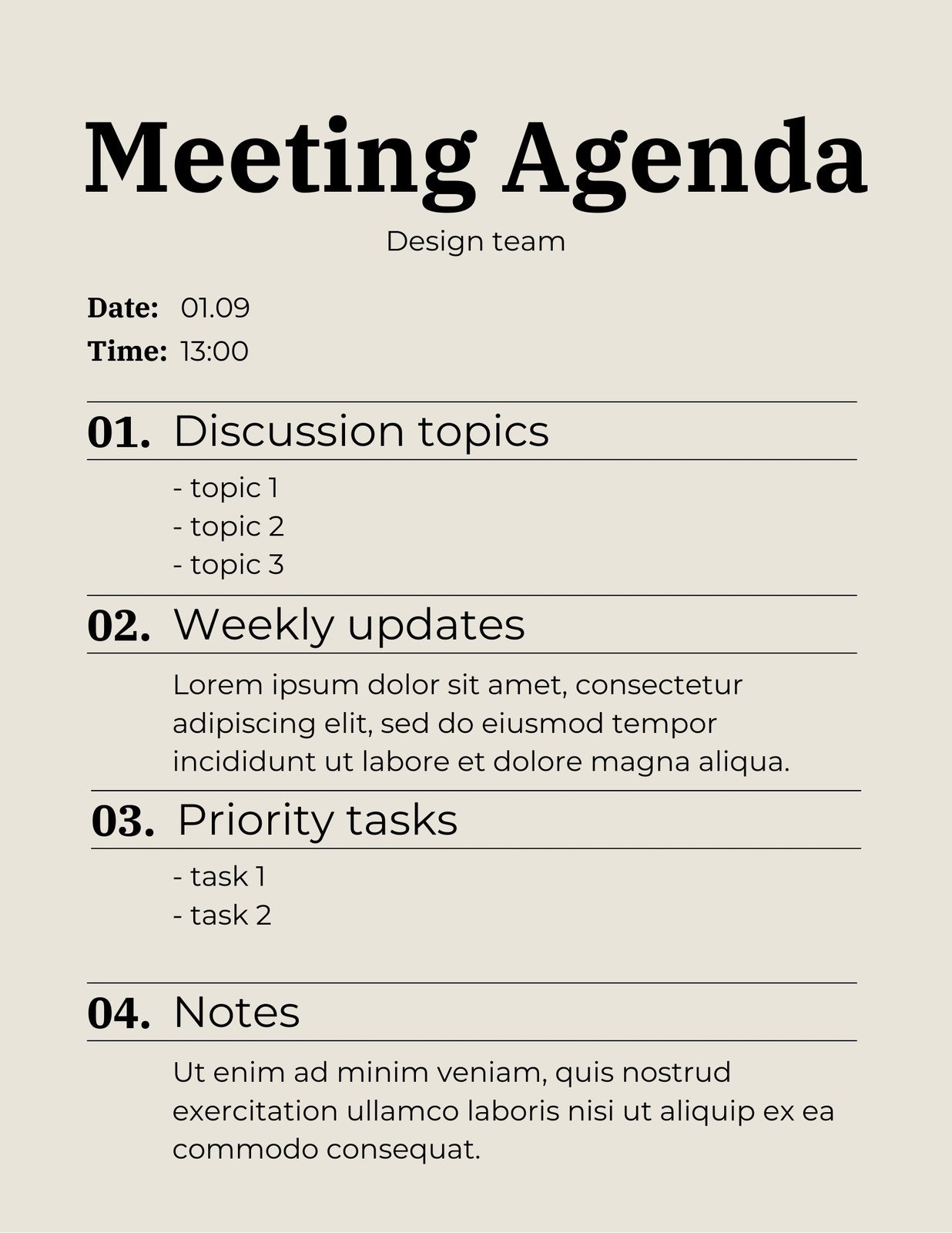Meetings. We all have them. Some are productive, some are… not so much. But one thing’s for sure: a well-crafted meeting agenda is the cornerstone of a successful and efficient meeting.
Think of an agenda as your roadmap. It guides the conversation, keeps everyone on track, and ensures that valuable time isn’t wasted on tangents or unproductive discussions.
This guide will walk you through the essential elements of creating a meeting agenda that will leave your team feeling energized and accomplished.
1. Define the Meeting’s Purpose
Before you even start drafting your agenda, ask yourself:

Image Source: canva.com
What is the primary goal of this meeting?
Clearly defining the purpose will give your agenda direction and help you stay focused.
2. Identify Key Topics and Discussion Points
Once you know the meeting’s purpose, brainstorm the key topics that need to be discussed.
Break down complex issues into smaller, more manageable chunks.
For each topic, list specific discussion points. For example, instead of simply listing “Marketing Strategy,” include:
Discussion Points:
3. Assign Time Slots (If Applicable)
If time is of the essence, assign time slots to each agenda item. This helps keep the meeting moving and prevents any single topic from dominating the discussion.
Be realistic with your time estimates.
4. Determine Necessary Materials
Will attendees need to review any documents beforehand?
5. Include Action Items and Decision Makers
Clearly define who is responsible for each action item.
6. Share the Agenda in Advance
Distribute the agenda to all attendees well in advance of the meeting.
7. Stick to the Agenda (But Be Flexible)
While it’s important to have a plan, be prepared to be flexible.
If a critical issue arises that wasn’t on the agenda, briefly address it and schedule a follow-up discussion.
8. Encourage Active Participation
Create a welcoming and inclusive environment where everyone feels comfortable sharing their thoughts and ideas.
9. End with a Summary and Next Steps
Briefly summarize the key decisions made and action items agreed upon.
10. Follow Up After the Meeting
Send out meeting minutes that include a summary of key discussions, decisions, and action items.
Conclusion
Crafting a well-structured meeting agenda is an essential skill for any professional. By following these tips, you can ensure that your meetings are productive, efficient, and achieve their intended goals.
FAQs
What if the meeting agenda needs to be adjusted during the meeting?
It’s okay to be flexible! If a critical issue arises that wasn’t on the original agenda, briefly discuss it and decide if it warrants immediate attention or if it should be addressed in a separate follow-up meeting.
How can I ensure that everyone stays engaged during the meeting?
Encourage active participation by asking open-ended questions, actively listening to all viewpoints, and creating a welcoming and inclusive environment.
What should I do if a meeting consistently runs over time?
Analyze the agenda and identify potential time-wasting activities. Consider assigning stricter time limits to each agenda item.
How can I make sure that action items are actually completed?
Clearly assign responsibility for each action item and set realistic deadlines. Follow up with individuals to ensure that they are on track.
What are some common meeting agenda mistakes to avoid?
Not defining the meeting’s purpose.
This article provides a comprehensive guide to creating effective meeting agendas. By implementing these strategies, you can significantly improve the productivity and efficiency of your meetings.
Meeting Agenda Meeting